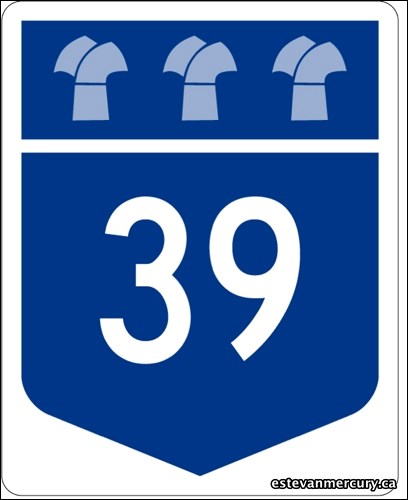A new provincial highway traffic count provided to the City of Estevan by the Highways and Infrastructure ministry has found its way to the local Time to Twin committee centred in Estevan.
The Time to Twin group is relatively low in numbers but vocal in their support of a plan to twin Highway 39 and Highway 6 south of Regina to the United States border at North Portal.
Time to Twin spokeswoman Marge Young said the new traffic volume numbers released by the government compare favourably with those compiled in a more informal fashion by committee members in October of 2010.
"Their count on Highway 39 just west of Estevan was 3,870 in 2011 and ours in a 14-hour period in late 2010 was just over 3,300," said Young, adding that she would like to know when the 2011 count was taken.
"If it was taken during grid road ban season or when the floods were happening, that would influence the traffic flow," she said.
A very heavy traffic count of 6,920 vehicles per day was noted in the short stretch of highway (approximately 11 kilometres) of intense traffic between the Bienfait (Highway 18) turnoff and Estevan.
On short-term traffic counts, vehicles numberd 5,200 along the Estevan to Midale to Weyburn stretch and then around 3,900 from Weyburn northwest to Highway 6 heading into Regina. The traffic count picks up again closer to Regina with a daily count of 4,560 vehicles using that stretch of the highway that the local committee want to see expanded into a four-lane transportation link.
With short-term counts of 6,220 vehicles near Estvan, 4,100 near Weyburn and nearly 3,900 around Milestone, Young said the figures make the argument in favour of a wholly twinned highway.
"We have talked with Doreen (Eagles, Estevan's MLA) and have asked her to make sure that the new Highways and Infrastructure Minister Don McMorris receives our binder that included 200 personal and specific testimonials from local truck and other commercial drivers concerning safety issues along this highway," she said. The group had also filed a mini-petition with the ministry, meaning that the petition was not widely circulated, but generally concentrated on the regional trucking and other related industries for signatures.
"That number count between Estevan and Bienfait is a real concern and the overall traffic count in the southeast shows that our numbers are as high as anybody's in the province," Young added. She noted that the only highways with higher volumes are the TransCanada Highway No. 1 and Highway 16 and Highway 11 which are already twinned or double laned in areas where traffic is heaviest.
"The other major factor we want the ministry to consider is the size and speed of this traffic we deal with around here. Most of it consists of big semis and oil rig or mining trucks," Young said.
"Then when we consider all other factors such as the fact that a lot of people are having to commute between Estevan, Weyburn and Regina and points in between, and the fact that this highway is the major trade corridor for North American business, we'll see increasing volume. That has already been well documented at the border points. It seems their numbers, especially the big truck numbers, are increasing monthly and that's even with the economy supposedly levelling off lately."
Young said the Time to Twin committee is "sticking by our opinion that passing lanes are not the solution. They may be less expensive, but you save money at what cost? What happens when big rigs have to merge? We can't deny that passing lanes may work in some areas of the country but not here."
"So far there is nothing south of Highway No. 1 (TransCanada) that is twinned. So if the Highways Ministry use their own numbers to help them with their decisions, and they keep saying a volume of 5,000 is their base or entry point for a twinned highway, even if highway counts on the TransCanada aren't that high in most regions in Saskatchewan, all they have to do is look and see where our numbers already are, without including the expected growth. They'll have to look at the international aspect of it. They'll have to look at vehicle sizes, speeds and commuter needs, the geography and economy and move accordingly."
It was also noted earlier that the RCMP have acknowledged the increase in traffic by dedicating a six-member team that is devoted only to the southeast highways in an attempt to keep the lid on speeders and reckless drivers.
Young said the other regional highway that leads to Regina, Highway 47 south and north up to Stoughton and then into Regina, indicates a fairly heavy volume as well, with 3,110 vehicles heading north from Estevan on No. 47 toward Stoughton on a daily basis and another 1,830 vehicles using the heavily damaged Highway 47 south that leads from the United States/Canada border point into Estevan.




